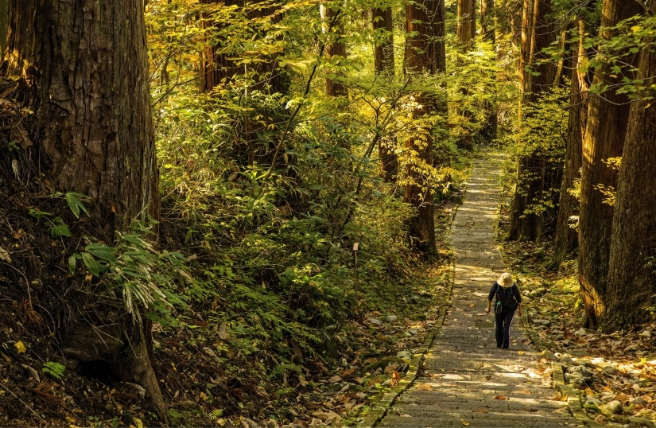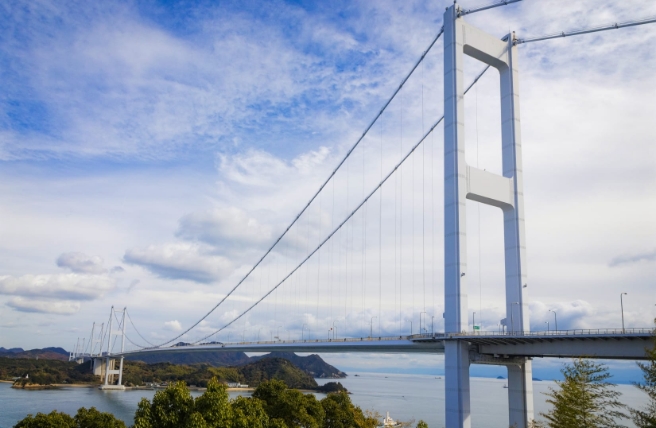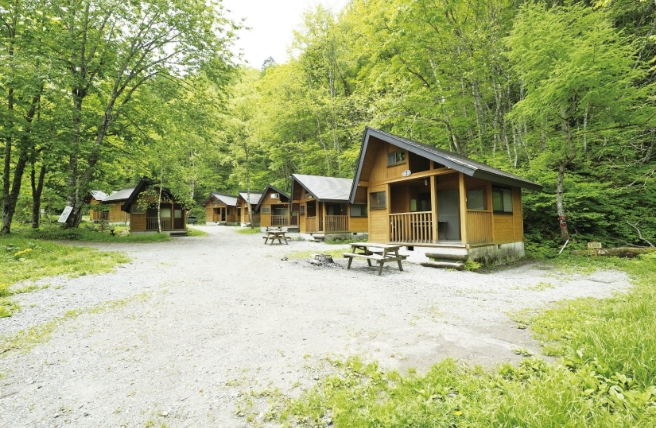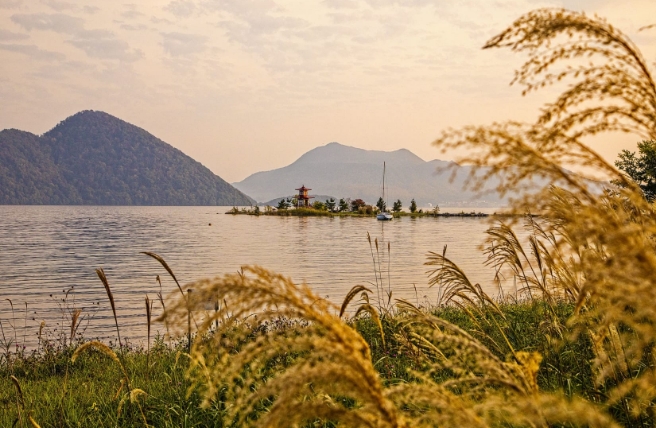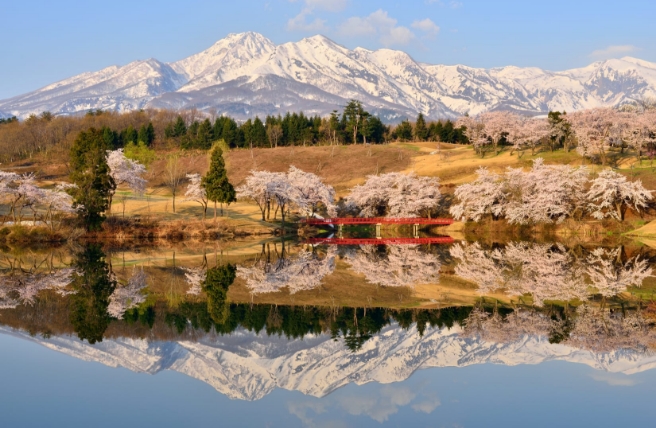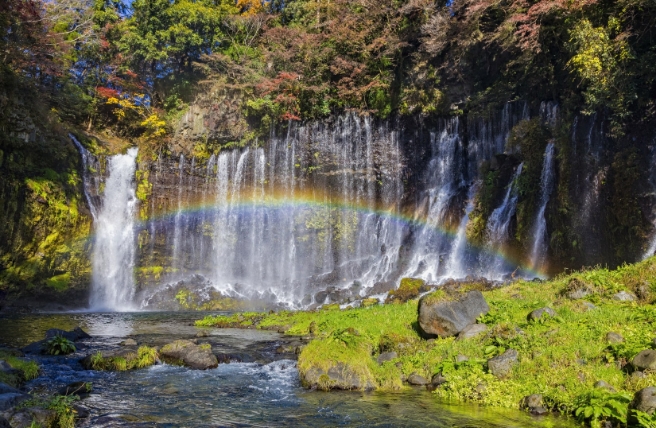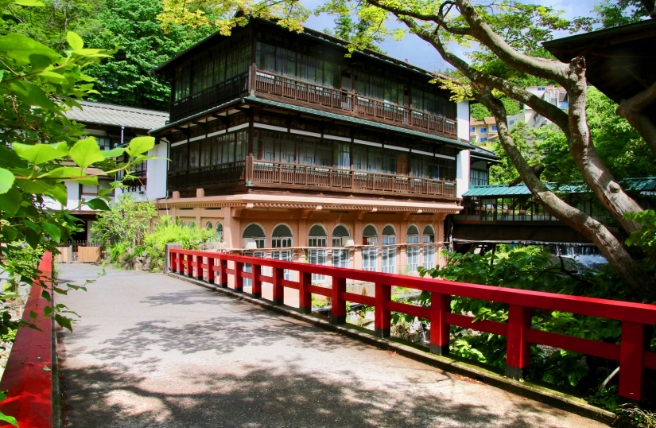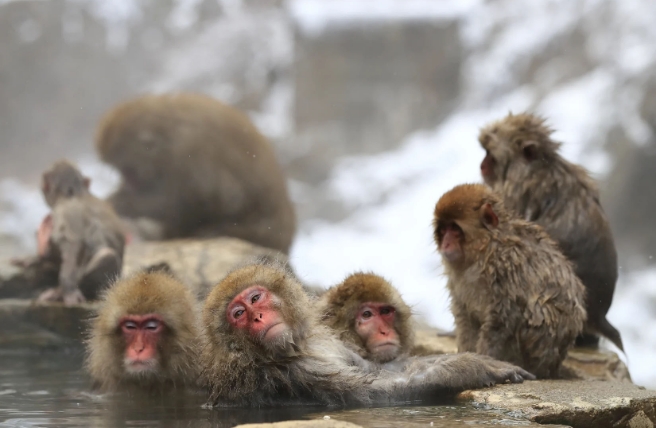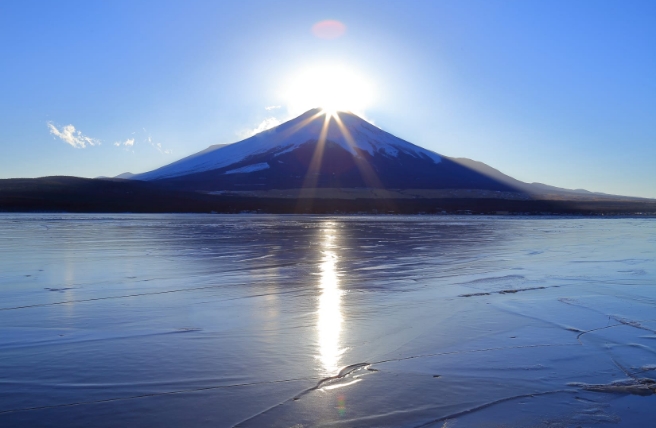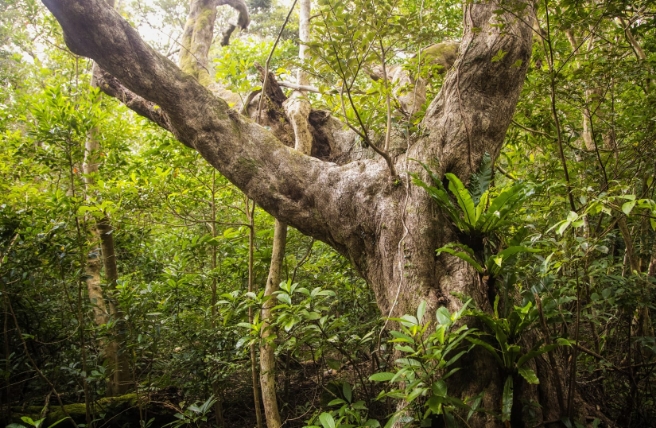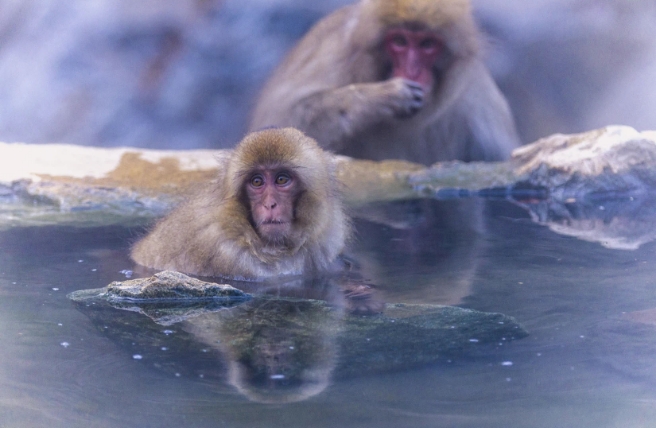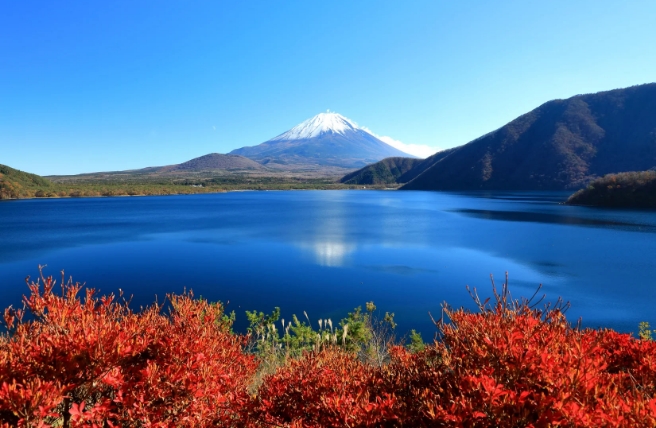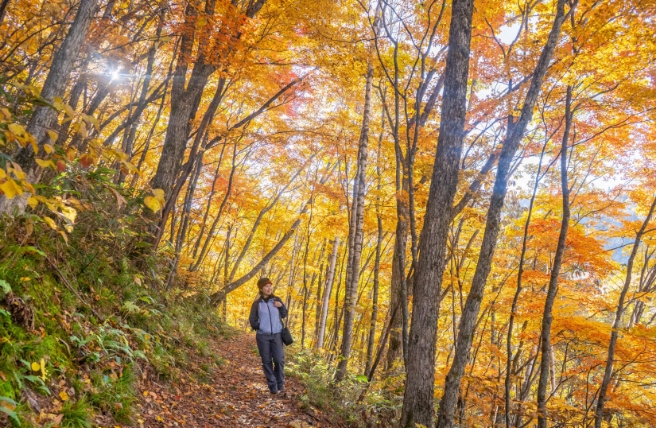Mt. Hakusan is popular for its summer flower season, when the valleys burst into color, showcasing over 100 species of alpine plants.
Hakusan National Park is named after Mt. Hakusan (“White Mountain”). Located in the western part of central Japan, the park spans four prefectures: Fukui, Gifu, Ishikawa, and Toyama.
The Hakusan mountain range consists of three main peaks: Mt. Gozengamine (2,702m), Onanjimine (2,684m), and Mt. Kengamine (2,677m).
At lower elevations, Hakusan is covered with lush primeval forests of Japanese beech and Erman’s birch trees. However, one of the park’s major attractions, and the reason it is a popular hiking destination, is its diverse alpine flora. Over 100 species of alpine plants bloom each summer, transforming the park into a colorful floral tapestry.
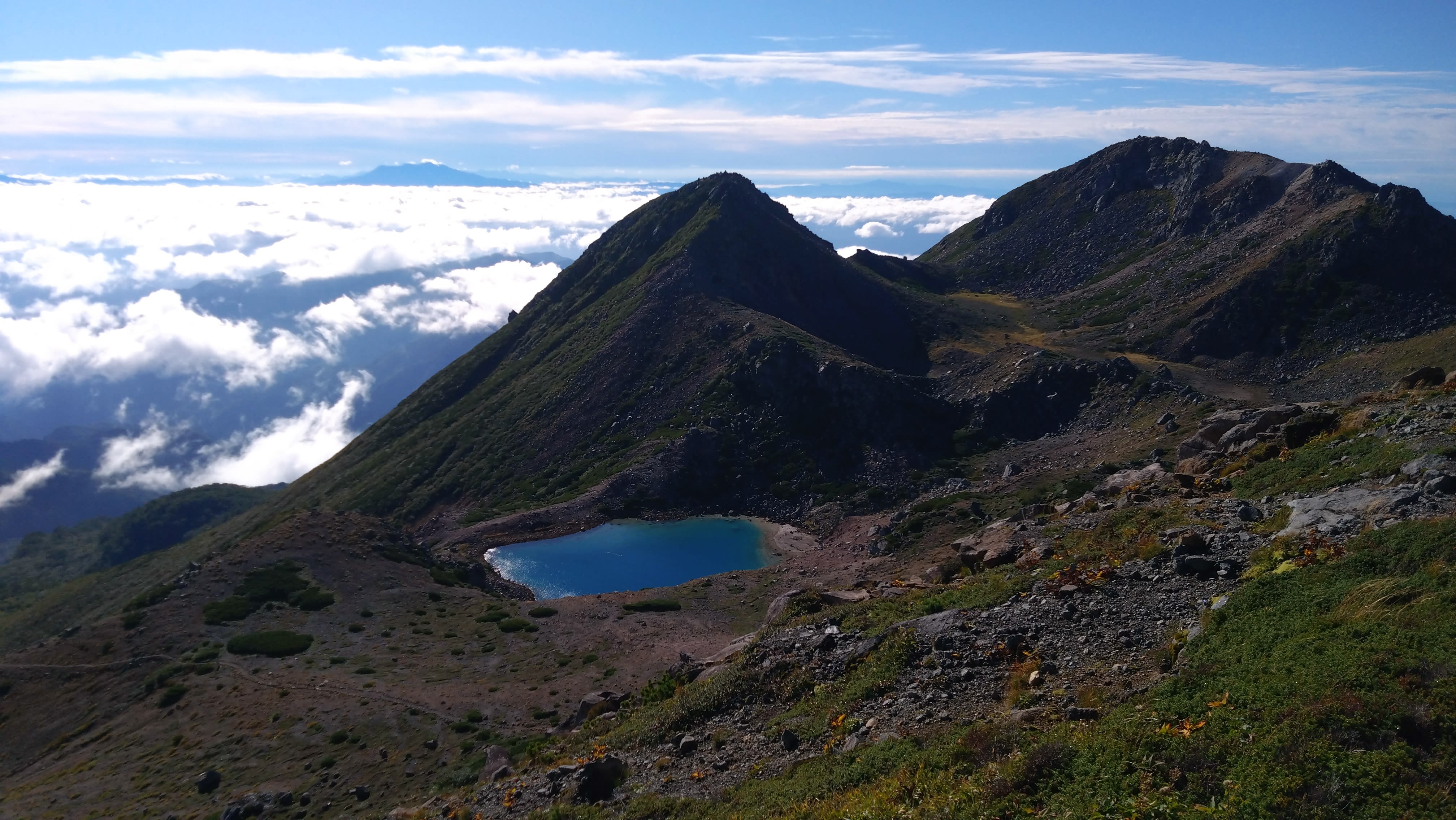
A diverse range of alpine flora
Hiroyuki Inaba, a board member of the NPO, Association for Conservation of Circum-Hakusan Area, has been climbing Mt. Hakusan since his student days. He now visits the mountain dozens of times a year. “Hakusan is now recognized by mountain enthusiasts for its beautiful alpine flowers,” he says. “The park features flower fields that are accessible to anyone willing to climb for a few hours.”
“The park features flower fields that are accessible to anyone willing to climb for a few hours.”

Hakusan is known for heavy snowfalls during the winter months, when only experts at winter climbing enter the mountains. The hiking season for the general public begins in the first half of July and lasts until the middle of October. Alpine flowers begin blooming after the snow melts, typically in early July, with some species continuing to bloom into late August.

Among the most distinctive sights of Hakusan, according to Inaba, are the dense fields of the black blossoms of kuroyuri (Fritillaria camschatcensis), a rare scene in most mountain areas. Another eye-catching variety is Hakusan furo (Geranium yesoense var. nipponicum), with its striking pink flowers. These have a relatively long season, and can be seen from July through August. Veratrum and daylilies often bloom around the same time, and the location of larger colonies can make the area seem like a floral garden.

One of Inaba’s personal favorites is the hakusanichige (narcissus anemone), a small white flower that is a member of the buttercup family. “It has a very short flowering season,” he explains, “and can only be seen in the first half of July.” Later in the season, you can find the purple flowers of Aconitum hakusanense and the varied pastel shades of Scabiosa japonica var.alpina.
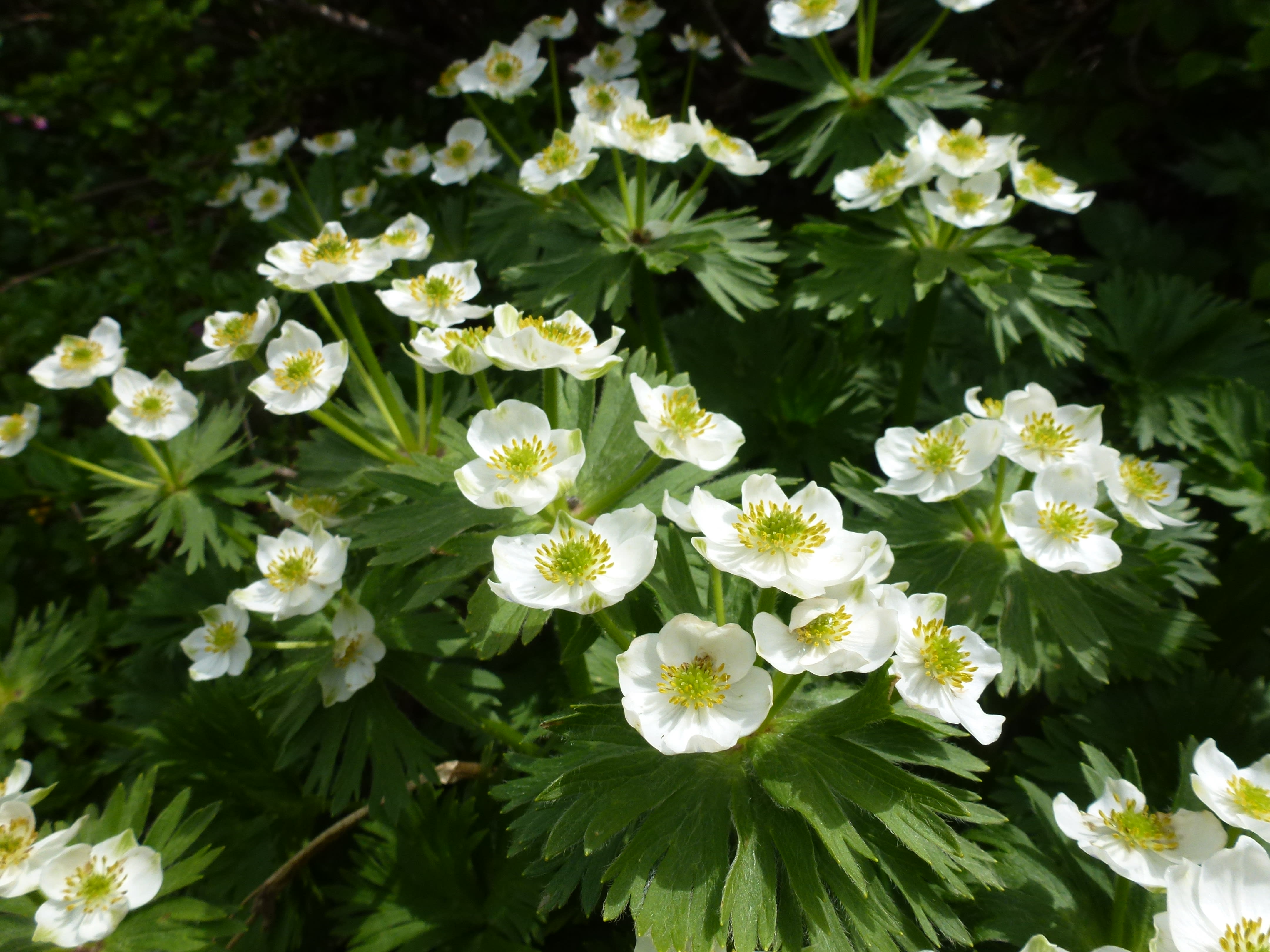
Access to the fields of flowers
For accessing the flowering areas, Inaba recommends the Kanko Shindo and Echo Line trails, both of which are well maintained and easy to hike. He also suggests the more remote area of Ohanamatsubara, where the flowers bloom all at once due to the late snow melt—usually around the middle of August. “Because the area is more remote, it receives less visitors,” he says, “and the flowers can be enjoyed in relative solitude.”
The park is accessible via several trails leading into the park, though most visitors use one of the three major routes—the Sabo Shindo, the aforementioned Kanko Shindo, and the Hirase Do. Although the approximately 10-kilometer round trip can be made as a day trip, there are yamagoya mountain lodges where visitors can stay overnight or just stop by for a meal.

Minimizing the impact of non-native species
Like in many of Japan’s national parks, there are active initiatives working to minimize the impact of invasive alien species, and Hakusan is no exception. Thanks to the ongoing work of Inaba’s NPO and others, he says, the park has not seen significant damage from these invaders, but continued vigilance is essential. “As long as people come to visit the park, they will inevitably bring seeds with them,” he says. The Ministry of the Environment has installed mats for scraping shoes to remove seeds at almost all of the trailheads, along with signs encouraging hikers’ cooperation.
Volunteer programs focused on removing plants that are already established in the park are also being held. “We remove from 500 to 700 kilograms of about 13 or 14 non-native plants each year,” Inaba says. “We have been doing this for 20 years, and is one of the reasons why we’ve been able to avoid any major issues.” Volunteers receive a 30-minute lecture explaining why invasive plants are a problem, what kind of impact they have, how to recognize them, and how to remove them. “We don’t want people to remove the wrong ones,” he says, “so we ask volunteers to concentrate on the ones that anyone can distinguish.” The volunteers are given bibs to identify them as part of the group, which also helps build awareness among hikers that are passing by.

He notes that visitors should not do this on their own, but only under supervision. “The number of people who show interest in our efforts are increasing,” Inaba says. “We have had eco-tour events with participants from overseas using interpreters, so we happy to have anyone join us.”

Doing Your Part to Protect the Park
Hakusan National Park is an ideal location to enjoy hiking in Japan’s mountains, especially during the flowering season. There are a number of things you can do to keep the park in peak condition for future visitors.
- Please use the mats and brushes at the trailheads to remove seeds from your shoes, clothing, and backpacks to prevent the introduction of invasive alien species
- Please stay on the trails to avoid damaging the environment
- Please do not remove flowers and other plants from the park. You will be fined
- Avoid sitting among the flowers for photographs or meals, as this can damage delicate plants
- Take any garbage with you out of the park
